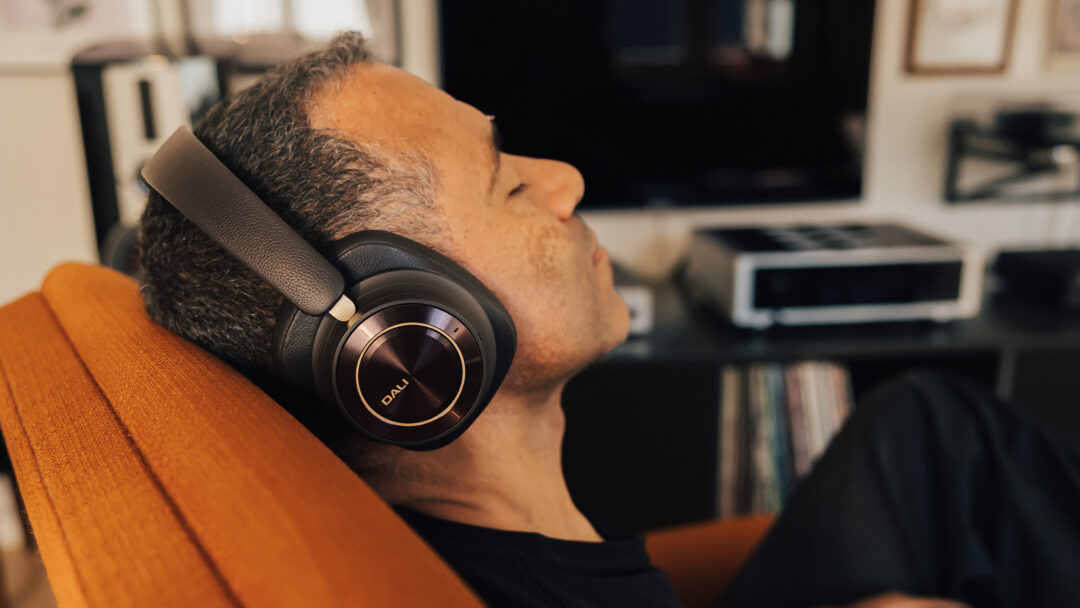The Dali iO-12 is brand new, but the Danish speaker manufacturer is following a familiar path.
If you’re a speaker manufacturer, speakers are the answer to everything. So Dali describes its headphones as “speakers for the head”. The drivers are made like loudspeaker units, with a paper fibre diaphragm, real voice coil and proper edge suspension.
This recipe was successfully realised in Dali’s headphone debut, the iO-6 in 2019. And it’s being used again now, almost exactly four years later.
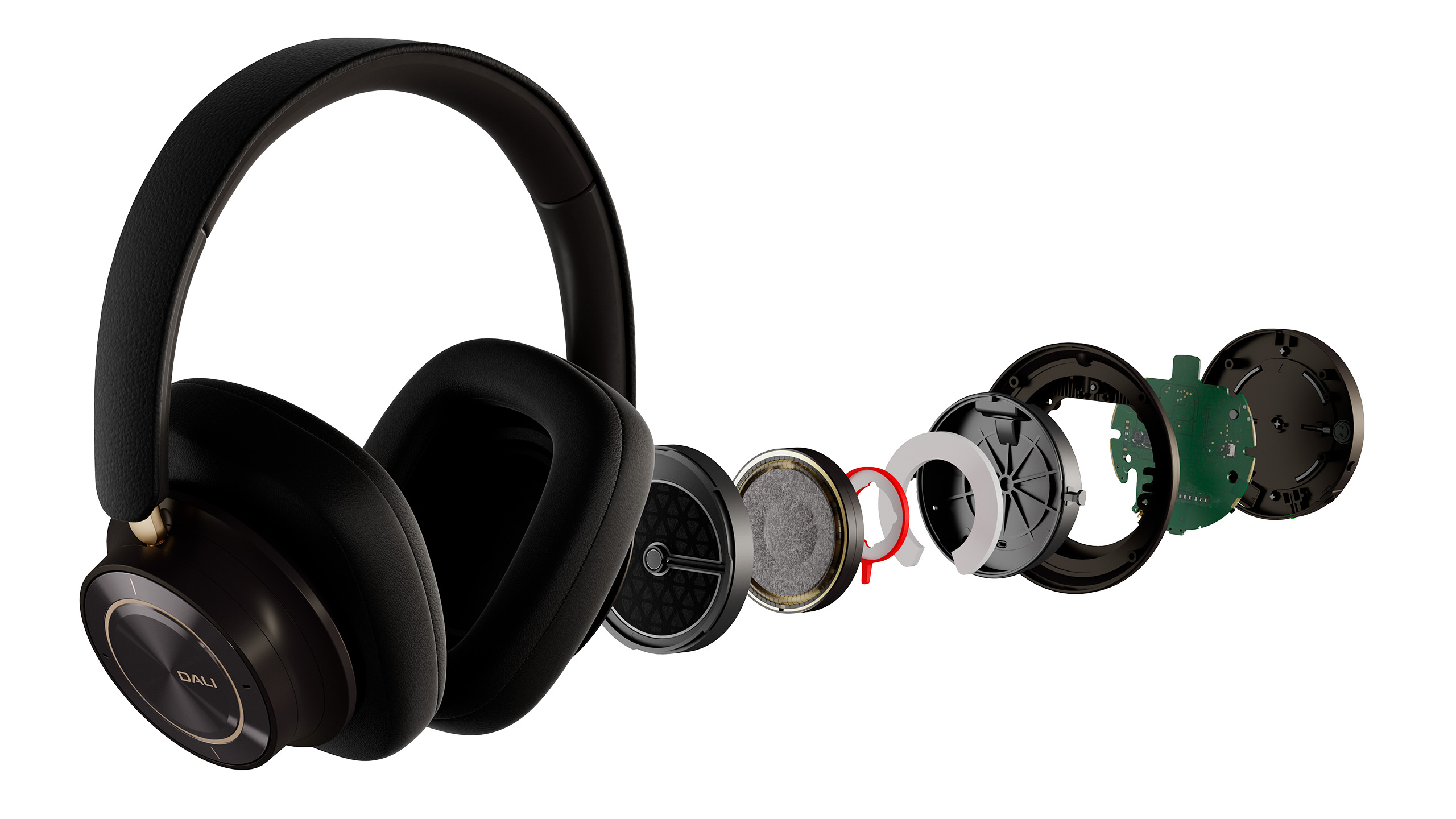
Magnetic technology from top speakers
As the level of ambition has increased in line with developments in the intervening period, Dali has borrowed technology from their own high-end speakers in the form of SMC (Soft Magnetic Composite), a non-electrically conductive magnetic material developed and patented by Dali. According to Dali’s own measurements, the use of SMC reduces distortion in the drivers (sorry, the speaker units!) to less than a tenth in large parts of the frequency range.
Whether the technology can be translated into audible reality is a question we’ll come back to.
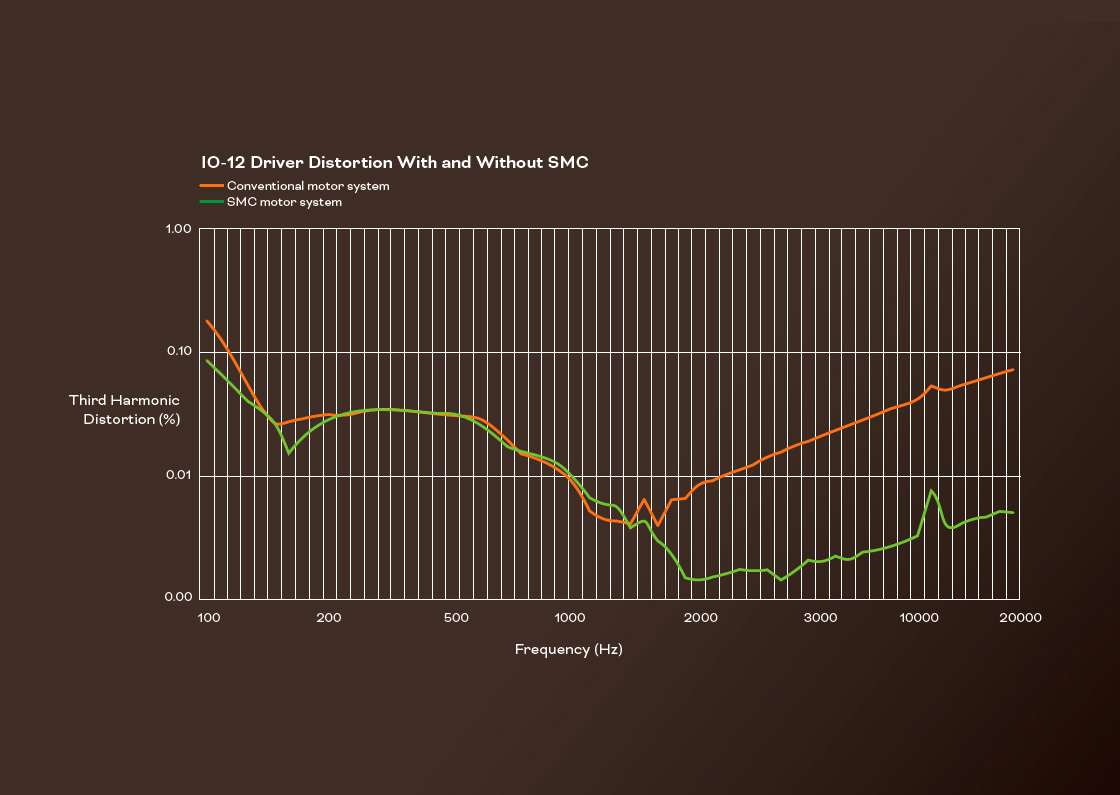
The Dali iO-12 is more than twice as expensive as the iO-6, putting it in the high-end class where you can expect an exclusive finish. And the iO-12 delivers. The large square ear cushions and headband are covered in leather in the same chocolate brown colour as the ear cups, and the whole thing oozes understated luxury. The build quality is on par with the best we’ve seen.
Dali's headphone debut DALI IO-6 secures the Danes a place in the top class of luxury noise-cancellation.
Adjusting volume and selecting tracks is done on the right ear cup, and thankfully Dali has opted to use real, physical buttons instead of touch obfuscation. Three round buttons on the right ear cup provide a choice between ANC, EQ and on/off/Bluetooth pairing.
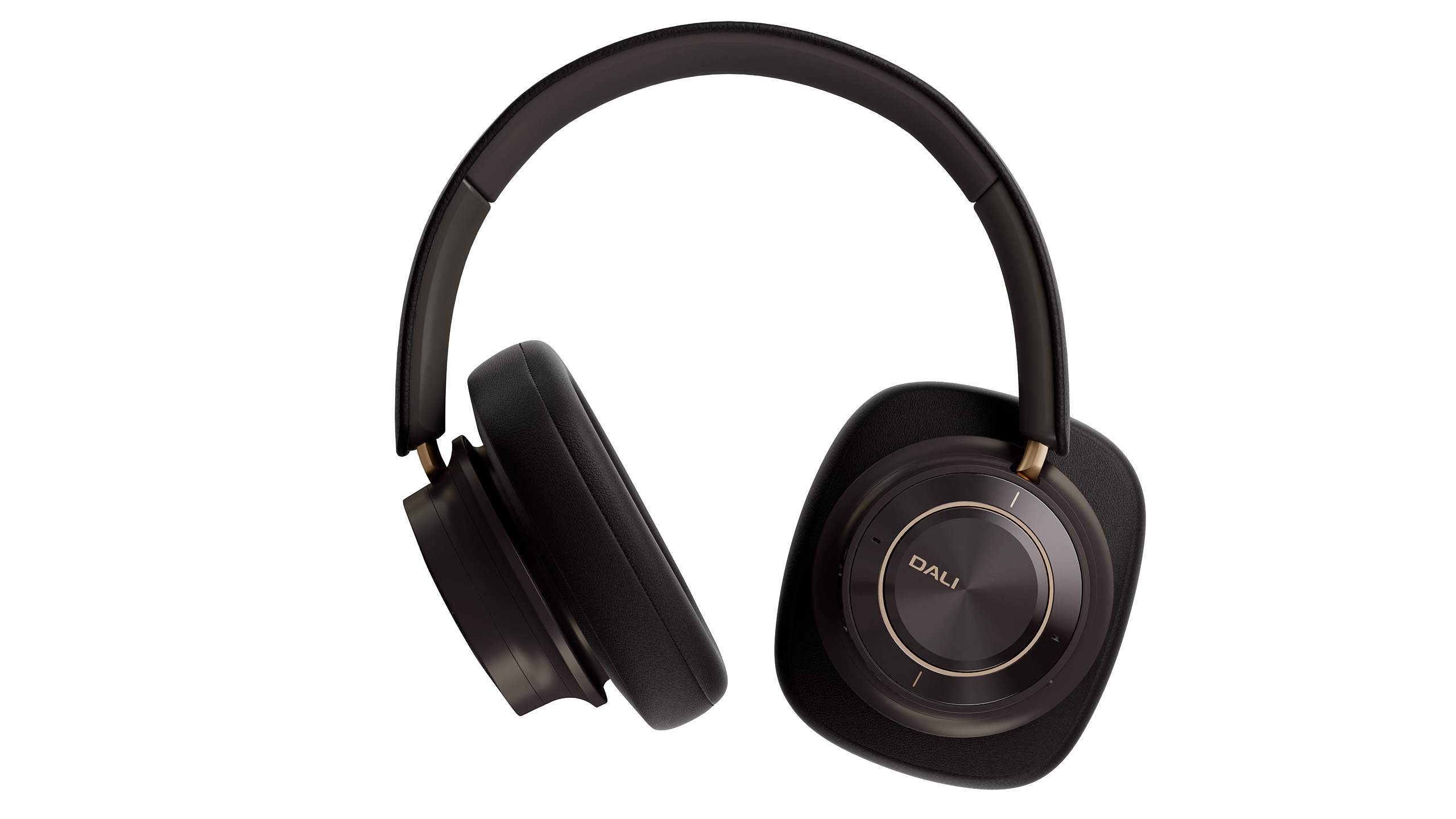
Only one way: The right way!
The Dali people have no lack of confidence in their own product. While most wireless headphones today offer variable noise cancellation for different usage situations and an app with an equaliser to adjust the sound to your liking, the Dali iO-12 has a take it or leave it attitude. There is no app, because it would be redundant. And there’s only one ANC setting: the best.
However, the folks at Dali have compromised so much that they’ve graciously added a button that gives the bass an extra boost. If you feel that way! But to make sure no one is in any doubt about the right choice, the two settings are called bass and hi-fi respectively!
Can also be used as “real” headphones
Dali iO-12 can be used both wirelessly and with a 3.5 mm analogue mini jack cable. And if you use a cable, you can choose to switch off the built-in electronics – including noise cancellation and DSP – and use the iO-12 as passive headphones.
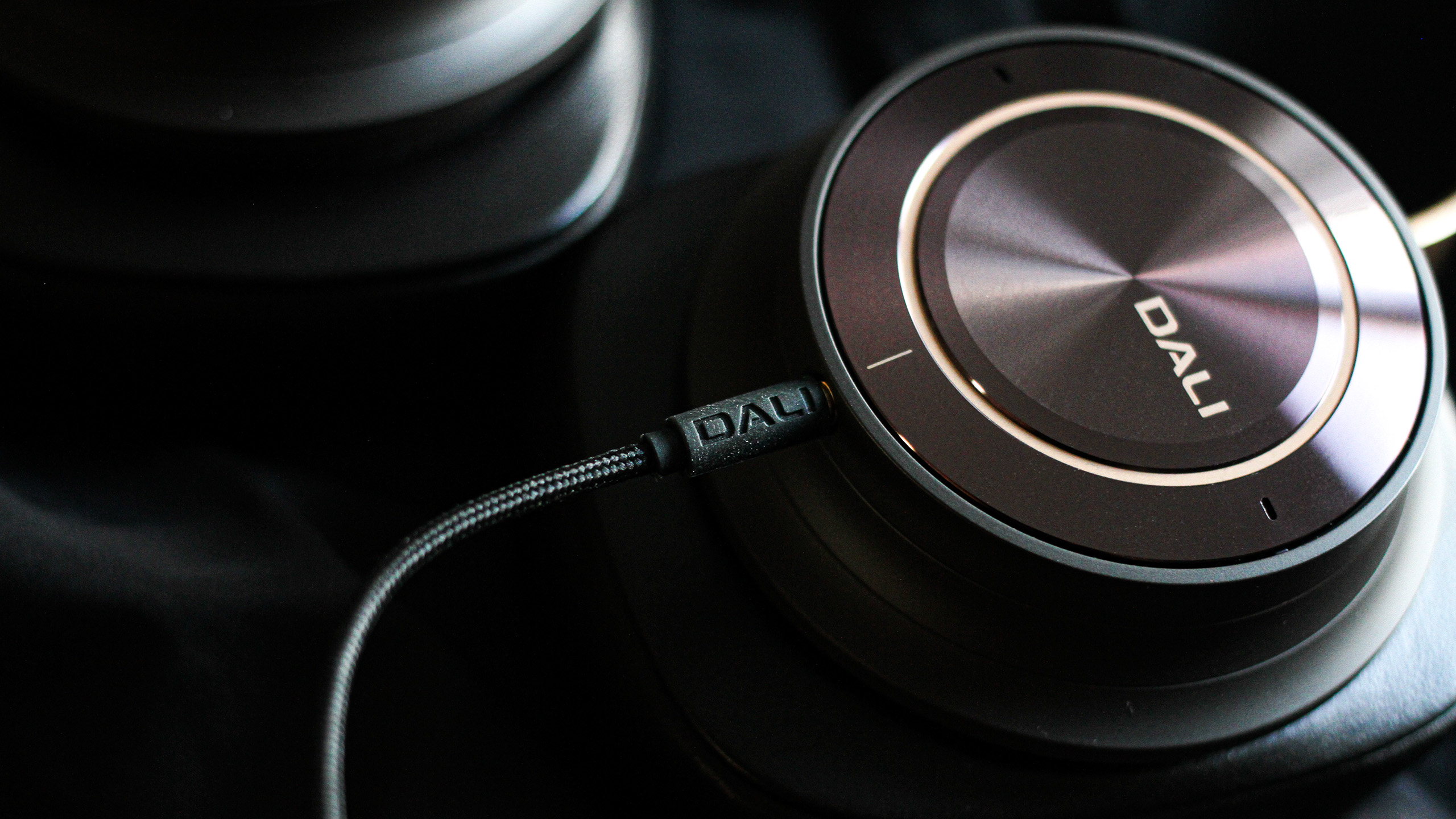
Passive wired operation is not uncommon on ANC headphones. But while passive use on most wireless headphones is an emergency solution that allows you to continue listening even if the battery has run out, the Dali people emphasise that the iO-12 is tuned so that you get exactly the same sound whether the electronics are switched on or off. And thus without the help of the digital signal processor. In fact, to such an extent that Dali confidently considers the iO-12 as wired hi-fi headphones that can also be used wirelessly!
Bluetooth and direct digital
As wireless headphones, Bluetooth will still be the obvious choice for most people. And with protocols like aptX HD (and AAC as a workaround for phones without aptX support), it’s also pretty reasonable.
A fourth option is wired digitally via USB-C. A USB cable is included, which is also used for charging. The cable is solid, but also a little too short and stiff to be comfortable or practical. Which is a shame, as you get more of the benefits of both methods at once: lossless connection and a purely digital signal path with no conversions along the way. But there’s nothing stopping you from using any USB cable you prefer – audiophile or not.
The sound of the Dali iO-12
We are surrounded by easily accessible music around the clock. Millions and millions of tracks are ready to be played. On your mobile phone, on your PC screen, through your Sonos speaker in the kitchen or on your TV. Like an uninterrupted tapestry of sound. And in quite honourable, average quality.
Sometimes we tend to forget why we listen to music: for the fascination and emotions.
Until an experience breaks through the tapestry of sound and slams the mental windows wide open. And such an experience is listening via the Dali iO-12.

Clarity and overview
There are simply more details in many of the familiar tracks than I realised. Of course, the music is the same, and new instruments don’t suddenly appear on stage. But there’s a clarity and overview that isn’t there with normal good wireless headphones. Or, for that matter, with speakers that don’t cost an obscene amount of money.
The Hi-Fi test classics sound heavenly, of course. But the biggest surprises come in the lesser-known tracks that I put on as a warm-up or during breaks in the actual listening test.
The Dali iO-12 is characterised by a very clean and undistorted sound that allows the instruments to come into their own. This is most noticeable on good acoustic recordings. For example Mormor with the trio Dreamers’ Circus. Here, you can hear every nuance of sound from the trio’s collection of unusual stringed instruments standing airily above a synthesiser base. I’ve listened to this track many times, both for testing and pleasure. But never with such good reason as here!
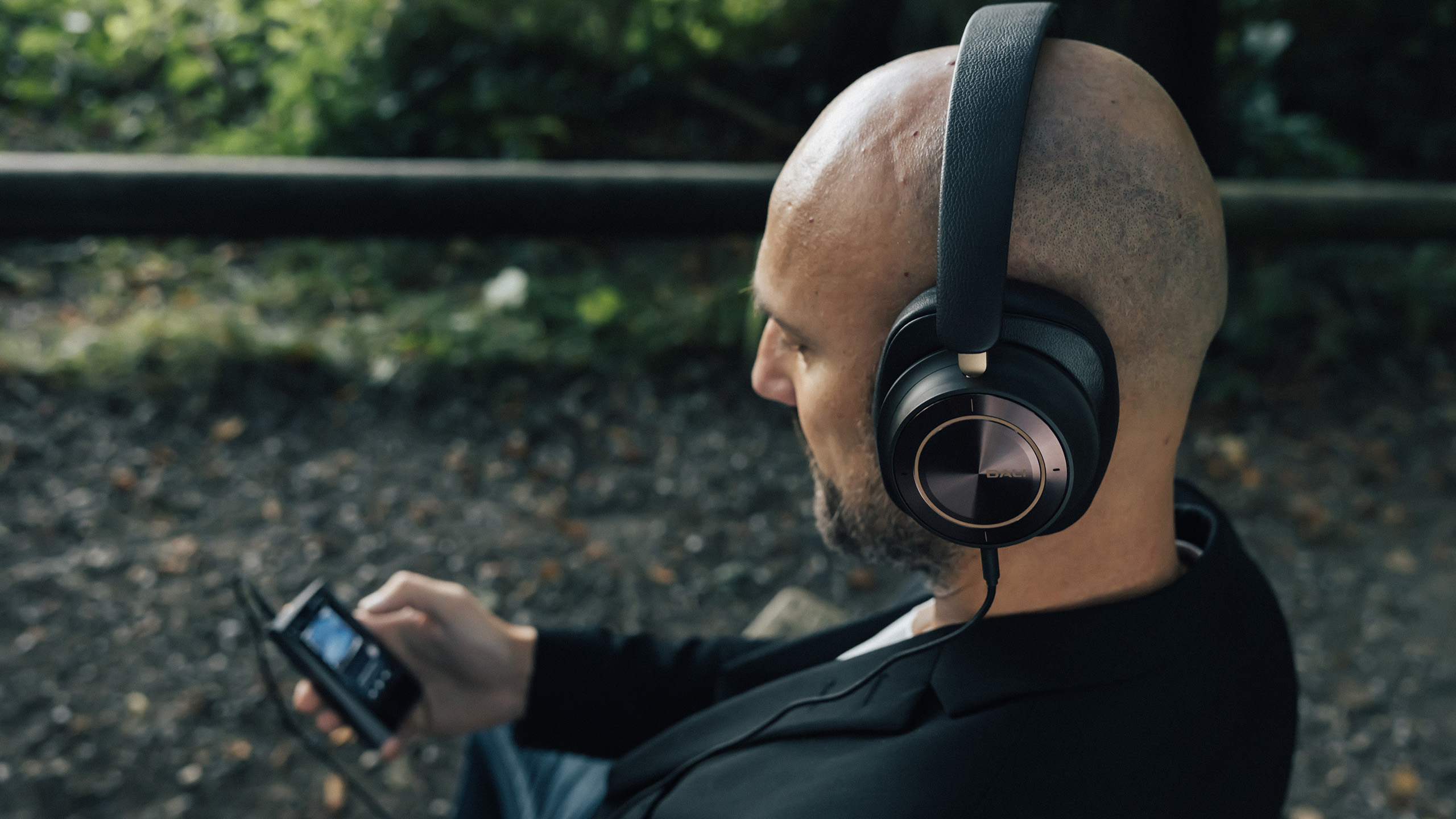
A track like Pirate Jenny from Marianne Faithfull’s Kurt Weill-album Seven Deadly Sins usually sounds dry and slightly boring. But not on the Dali iO-12, where you realise how much attention to detail went into the recording. Suddenly, a humble triangle becomes a pleasure to listen to. And every breath in Marianne Faithfull’s dry, broken voice exudes Jenny’s hatred.
I often return to Afgeninn’s Klingra album and the track Skjálvtin, which opens with a piano in a large, bright room. Here, you not only hear the notes standing distinctly, but also sense the muted sound as each key goes up again.
Mark Levinson doesn't make cheap stuff, and they're not about to start now - with their first wireless, noise-cancelling headphones. But how good are they?
An extra dose of bass
The Bass setting does what you’d expect: boosts the bass and removes the sound of hi-fi. In most cases, it’s too much of a good thing for my taste. On the other hand, an extra shovelful of coal can be just what you need on an old recording. Led Zeppelin’s Stairway to Heaven is undoubtedly an immortal classic, but the song was mixed at a time when the bass had to be turned down during mastering to make it possible to cut the discs. With the bass addition switched on, things come into balance.
Dynamics
Besides purity, it’s the dynamics that impress with the Dali iO-12. The headphones put a magnifying glass to level differences and transients. A snare drum beat or the strum of a guitar string is not just the sound of the impulse, but also the silence before and after it.
The MTV Unplugged version of the Eagles’ Hotel California is a feast of hand-played congas and acoustic guitars. Which, just in case, I had to listen to many times. Just to be sure…

USB cable
Switching from Bluetooth and aptX HD to USB cable doesn’t make a world of difference, but the good aspects become that much clearer and there’s a little more firmness to the bass response, which was by no means bad before.
As passive headphones
Dali has the audacity to claim that the iO-12 are at least as good when used passively via a headphone amplifier as they are when used with the built-in electronics switched on.
And I have to admit, they’re actually right. Of course, you have to do without the noise cancellation in that situation. But even though it’s good, you always switch off ANC when listening to relaxed hi-fi at home.
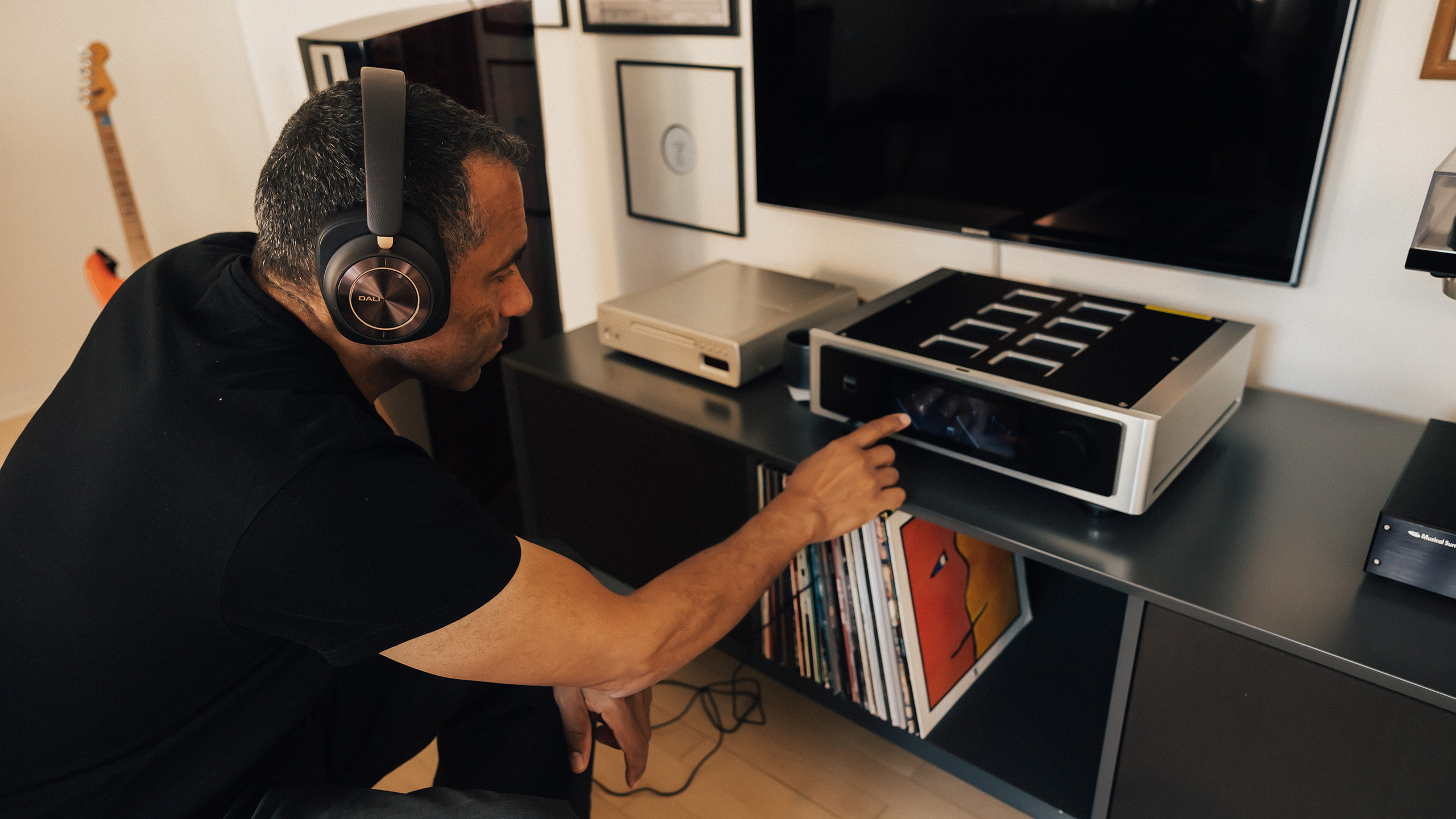
And while the built-in amplifier in the iO-12 is excellent, a good headphone amplifier adds a little more resolution and purity than was already in excess.
While the Dali iO-12 is by no means pumped up in the bass, there is now even more firmness and control in the bottom end.
Good ANC – but use it sparingly
The Dali iO-12 are noise cancelling headphones, and they fulfil that role brilliantly. The noise cancellation itself is not as effective as Bose or Sony. This is a deliberate choice, as they would rather sacrifice a few dBs of attenuation than risk negatively affecting sound quality.
Focal Bathys is a 'must have' product with outstanding sound quality, great comfort and excellent noise reduction.
They’ve succeeded. The noise cancellation is still effective enough to remove most ambient noise, and the thick leather-covered ear cushions inherently reduce the intrusion of ambient sound. This also means that the passive attenuation is often enough to keep the peace without turning on ANC. And even though Dalí’s noise cancellation algorithm (sourced from Sony) is among the least destructive and doesn’t have a “wardrobe effect”, the dynamics still get a little compressed with ANC on.

Conclusion
The Dali iO-12 are noise cancelling headphones in a price range that borders on hubris. You can get excellent ANC headphones for less than half the price. In fact, we’ve only tested two other wireless headphones in the same price range, the Focal Bathys and the Mark Levinson No. 5909. These are excellent competitors, with the Dali probably most similar to the Focal Bathys in their ability to reproduce dynamics. We haven’t pitted the two directly against each other, but the iO-12 stands out as one of the cleanest and most undistorted I’ve ever worn on my head. At least if we limit the field to wireless headphones and thus exclude the insane Sennheiser “Orpheus” HE1, which you cannot even afford to dream about.
The ability to play even better with cable – and best of all with everything switched off – is an unexpected trump card that makes the Dali iO-12 more than “just” excellent wireless headphones.

We think
Super clean and dynamic sound. And they're just as good when used as passive head-fi on your home stereo. Luxury down to the smallest, subtle detail. Relatively heavy. No app and only one noise cancellation setting. On the other hand, nothing needs to be adjusted.
999 €
Specifications
- Type: Over-ear, closed, wireless with ANC
- Drivers: 50 mm, paper fibre, SMC/neodymium magnet
- Frequency range: 10 Hz – 48 kHz
- Active noise cancellation: Yes
- Impedance (passive mode): 25 ohms
- Battery life: 35 hours with ANC and Bluetooth
- Voice control: Google Assistant, Siri and others
- App: None
- Connectivity: USB-C, 3.5 mm stereo mini jack, Bluetooth 5.2 (aptX, aptX HD, aptX Adaptive, AAC)
- Weight: 377 g
- Web: dali-speakers.com
